The document includes a series of quizzes, homework assignments, and labs from an ECET 110 course covering topics in electrical circuits such as series-parallel circuits, resistance, capacitance, Thevenin's theorem, and transient analysis. Each section provides problems related to determining unknown circuit parameters, applying Kirchhoff's laws, and verifying circuit behavior through theoretical calculations and simulations. Additionally, it emphasizes the practical application of electrical principles using lab exercises and simulations to enhance understanding.
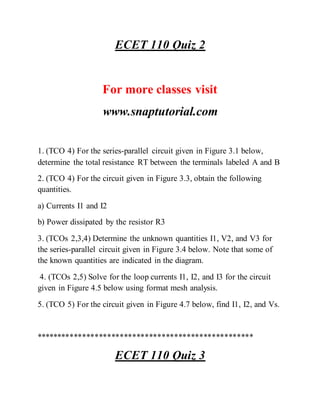
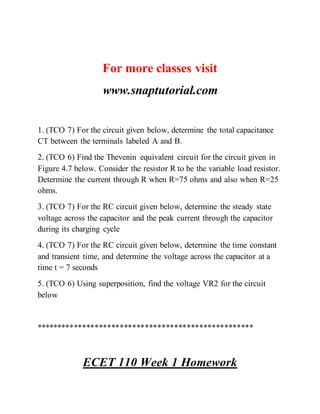







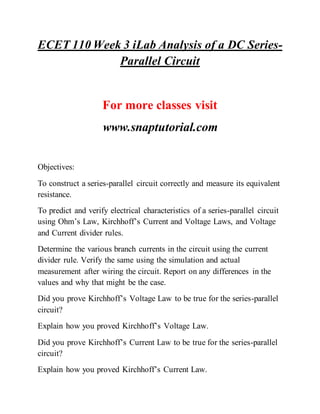




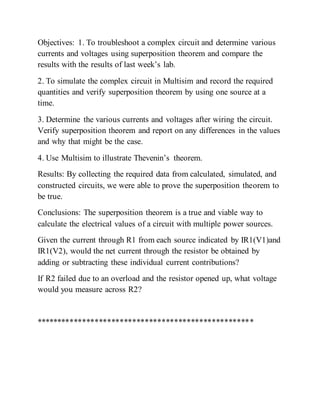

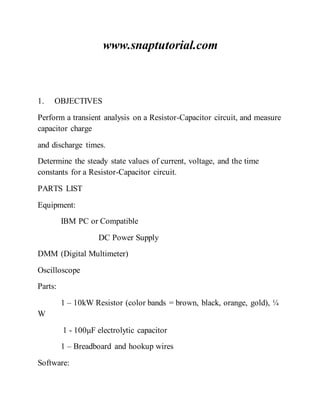
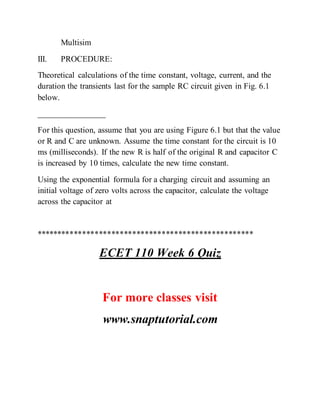

![Chapter 11: Inductors
Homework problems [12, 14, 29, 36]
****************************************************
ECET 110 Week 7 iLab Transient Analysis of a
Resistor-Inductor Circuit
For more classes visit
www.snaptutorial.com
Objectives:
Calculate time constant, transient time, current and voltage across
inductor at beginning and the end of the charge cycle.
Use MultiSim to test the calculations.
Build and test a physical circuit using the MultiSim schematic.](https://image.slidesharecdn.com/ecet110-200110061727/85/Ecet-110-Success-Begins-snaptutorial-com-20-320.jpg)
